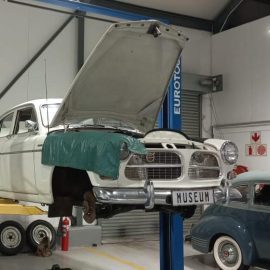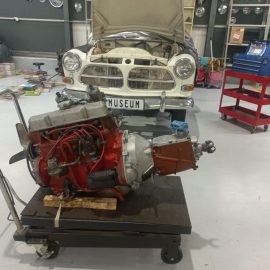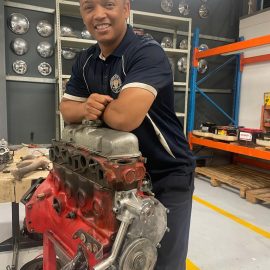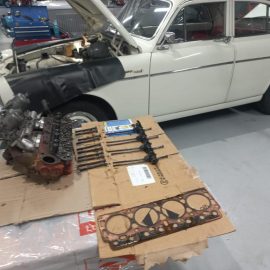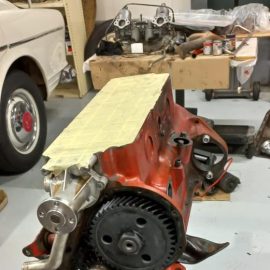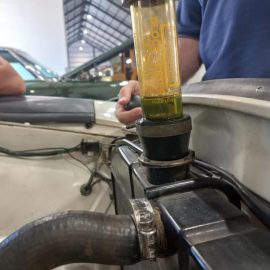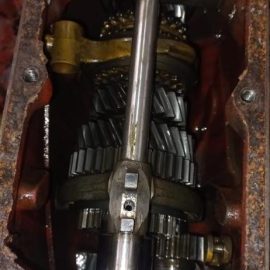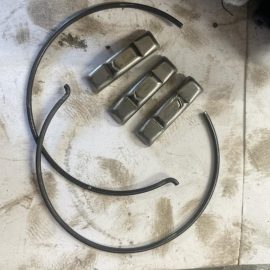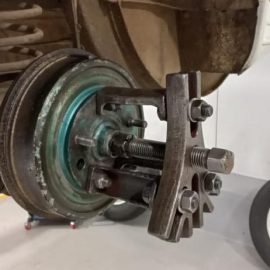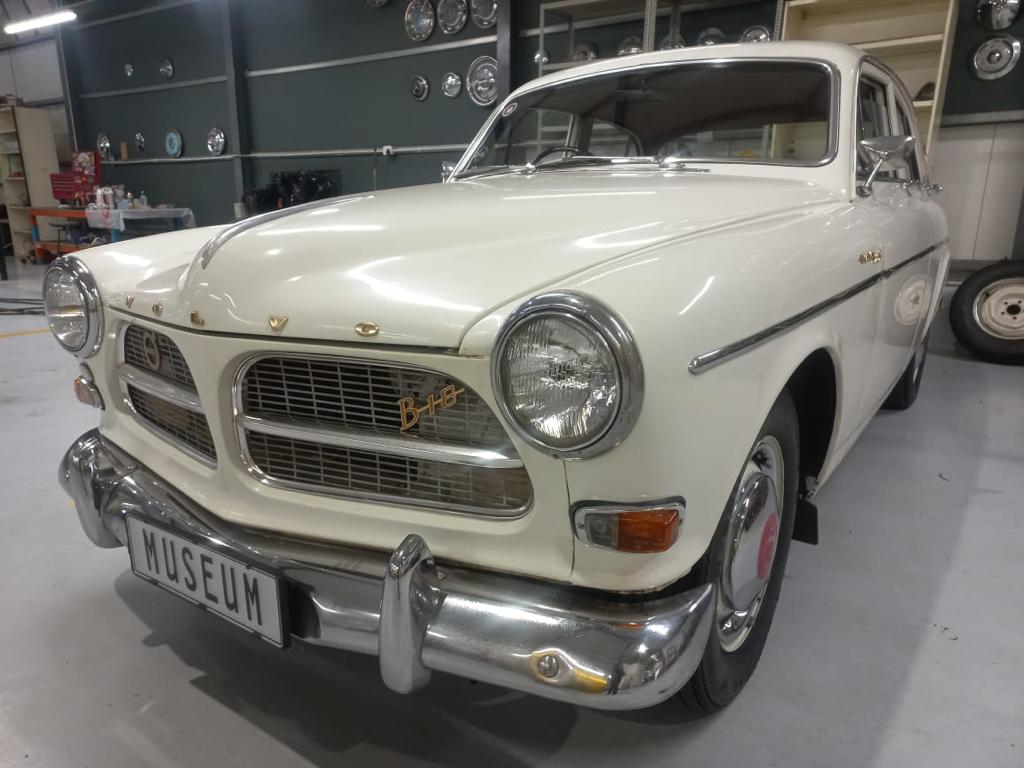
30 Oct Spanner Works: Volvo 122S
A regular feature by senior workshop technician JP du Plessis outlining the activities of FMM’s workshop personnel who are responsible for repairing, renovating, refurbishing and restoring the museum’s large and varied collection of vehicles. This month, JP reports on Wenstley bringing a safety-innovating Volvo back to life…
The Volvo 122S was a significant car, not only as it was very successful for Volvo as a manufacturer, but also for its safety standards. In 1959, it was the first car to be offered with factory three-point safety belts as standard across all models. Nils Bohlin, a mechanical engineer who started his working life as an aircraft engineer at Saab, moved to Swedish rival Volvo in 1958. Within just one year, he invented the first patent of what we now know as a required standard safety equipment in all vehicles.
FMM has two 122S models, one being a 1963 B18-engined 4-door saloon and the other, a B20-engined coupé from the 122’s last year of manufacture, 1970. The example Wenstley Wicomb tackled this time around is the beautiful white saloon with red upholstery. After being left dormant for a number of years, it was recently decided to revive the mechanicals and get it ready to drive again.
Wenstley started by inspecting the engine and lubricants for the reasons it was parked-up in the first place, namely suspected head gasket failure. He then removed the carburettors, fuel pump and engine auxiliaries and ensured they were cleaned properly. While the coolant system was disassembled, Wenstley noted many possible causes for what looked likely to have led to a head gasket failure. The water pump had sprung a leak, the radiator needed a re-core and the thermostat housing was badly corroded. These were all either sent away or refurbished in-house, along with the fuel tank getting rust treatment and a new chemical coating inside. Attention then turned to the SU carburettors, of which the pistons were stuck. Wenstley rebuilt the carbs with fresh kits and made sure the oil levels were correct in the suction chambers so that they were ready to be installed.
The gearbox and driveshafts also needed attention. The gearbox synchromesh retaining springs were weak, causing the blocker bars to get stuck when shifting from third to fourth gear. The parts were not readily available off the shelf, so the gearbox was sent to a specialist for a rebuild. After attending to the brakes, it was found that the left-rear side shaft was bent, causing the drum to get stuck or drag in rotation. Fortunately, a straight, second-hand spare was found and duly swopped .
The new head gasket arrived along with the re-engineered cylinder head. Work could then continue with the engine on the bench, it having been removed for the gearbox to be sent away. This helped in creating space under the bonnet to work freely cleaning the engine bay and chassis. As more components were completed or returned from refurbishment specialists, Wenstley continued to reassemble the items and put everything together and into place. With the gearbox and engine mounts fitted, the team helped Wenstley refit both the gearbox and engine into the 122S, ensuring clearances were good and pinching was avoided. All lubricants were then refilled and it was time to start and test the vehicle.
After a thorough test in the workshop, checking oil pressure and coolant temperature and fine-tuning the SU carburettors, Wenstley took the refreshed Volvo 122S for a drive on the estate and returned to the workshop very happy. A job well done!




